Exploring Vienna’s historic Ringstrasse in Field Trip
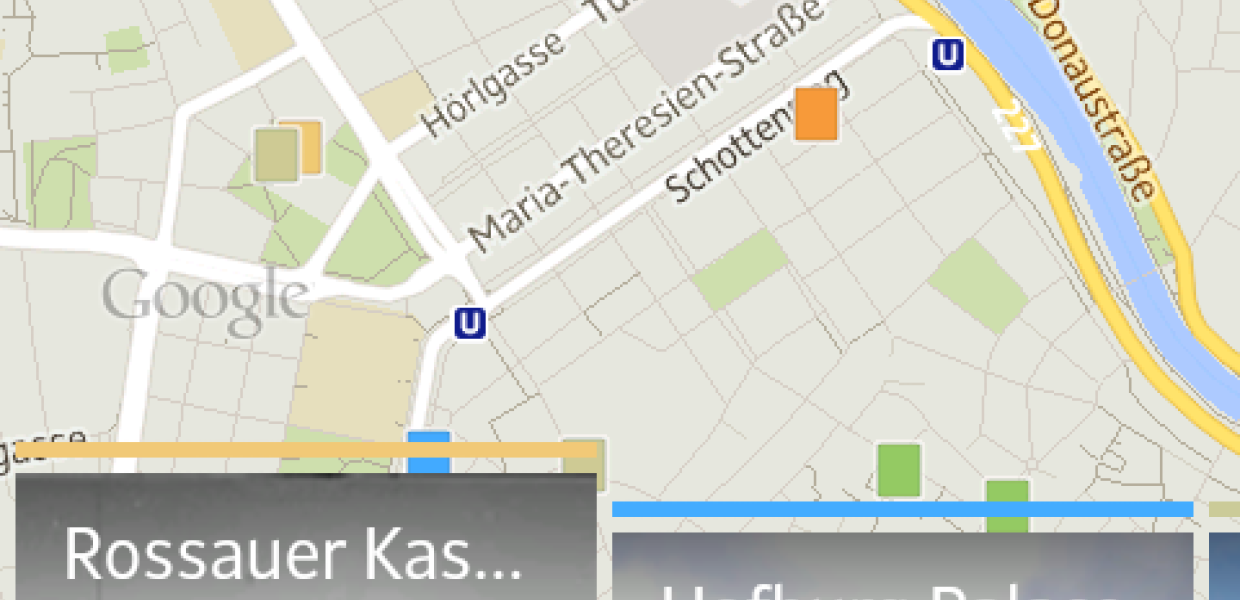
We’re excited to let you know that you can now discover Vienna’s historic Ringstrasse in Field Trip, a free app for Android and iOS, thanks to the Austrian National Library’s collaboration in Europeana’s pilot project with Niantic Labs.
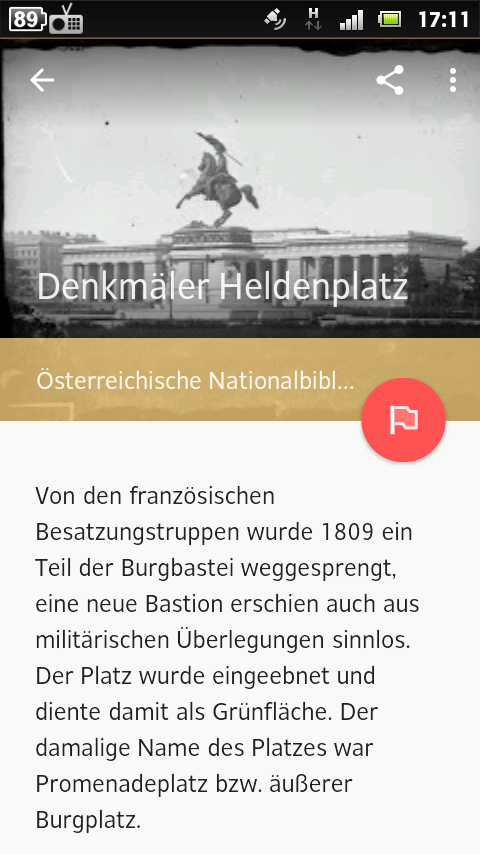
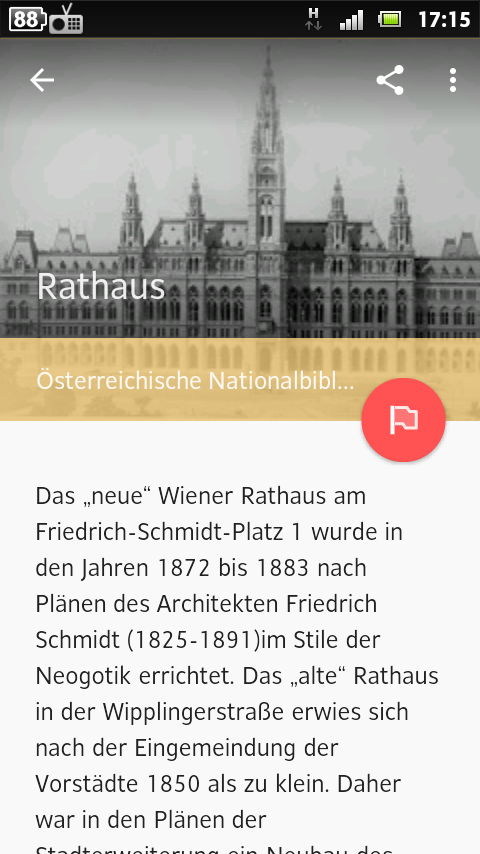
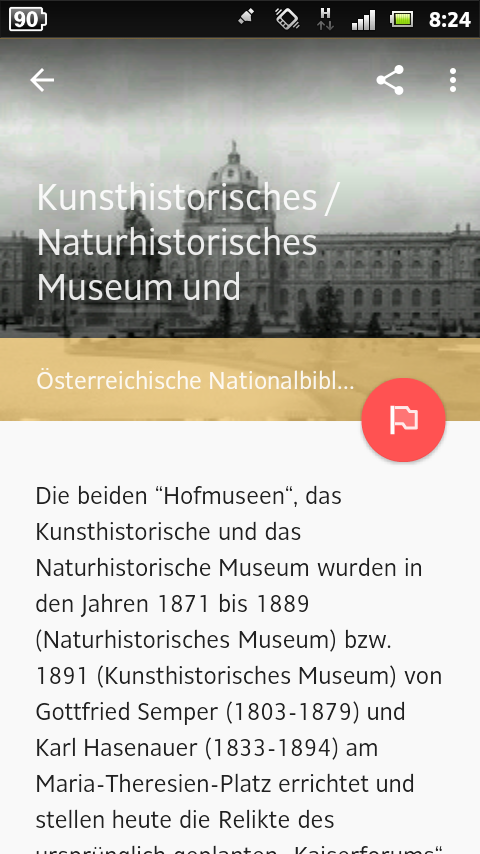
Screenshots of the Austrian National Library in Field Trip
As the Library and the city celebrates the Ringstrasse’s 150th anniversary, it’s the perfect time to explore this elegant road. Built in place of the defensive walls and moat which once hugged the city, it loops around its centre, dotted with grand buildings and leafy parks and squares.
Not only an important part of Vienna’s cultural history, it’s also perfect for strolling along on a sunny day. With Field Trip, visitors can discover the story of this historic road and its distinctive architecture as they wander.
The collection on Google’s Field Trip has been carefully curated by the Library and contains historical photographs of the road which are part of a wider exhibition currently being held at the Library, ‘Wien wird Weltstadt - Vienna Becomes a Metropole’. In the exhibition, which runs until November 1 2015, you can see these photos alongside graphic art, plans, caricatures and newspapers from the period.
By highlighting some of the famous buildings you will pass on your walk, it introduces you to their historic significance or hidden past.
One example is the fascinating Palais Ephrussi, built in 1872/73 by Theophil Hansen for the Ephrussis, a family of wealthy financiers. Having been a home for the family for decades, in 1938, they were forced to flee from it to escape the National Socialist regime. Only later, in 1950, did the family have their inheritance restored to them. Most of their wealth had been stolen except for a collection of 264 miniature Japanese sculptures, or netsuke.
These netsuke were saved by one of the family’s maids who hid the precious sculptures in her mattress and returned them to their owners after the end of the war. Her loyalty has since been honoured by the family’s descendent Edmund de Waal, who wrote about it in his bestselling novel The Hare with Amber Eyes.
From pilot to project
The Austrian National Library’s publication on Field Trip is an important milestone showing how the pilot with Niantic Labs has grown into an ongoing project.
Available in over 30 languages, and free to those who download it as an app for Android and iOS, Field Trip uses Google’s geolocation technology to enrich travellers’ adventures, inviting them to discover local history, fun facts about art and the architecture around them and much more. Europeana’s pilot project with the app, which you can read about here, shows the huge potential for cultural institutions to secure a meaningful presence in the growing digital tourism industry.
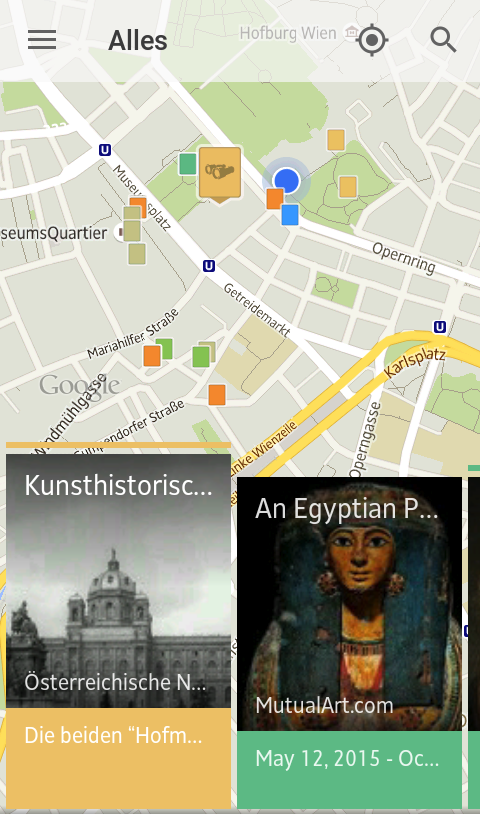
A screenshot of the Austrian National Library's content in Field Trip
It also fits in with the Austrian National Library’s wider work promoting the re-use of cultural content in different environments, and happily follows up on the Europeana Creative conference, Europeana Creative Culture Jam, which they are held at the Library. The conference provided a forum for cultural innovators to come together and share ideas and expertise.
Susanne Tremml, from the Austrian National Library’s Research & Development team, worked with Europeana on both these projects.
“Through Europeana Creative, the Austrian National Library opened up access to a huge collection of high resolution public domain images, from historic portraits to World War One press photography and posters, book illustrations and historic views of cities, villages and landscapes. This is part of the Library’s strategy to enable and explore re-use of their public domain collections. Through the project with Europeana and Niantic Labs we were able to build on this mission, opening up these collections in an innovative new way through the Field Trip app.”
If you’re interested in finding out more about Europeana’s project with Niantic Labs, and how you and your institution could get involved, email Milena Popova.
